
Alaska Whales, A photo Adventure
Whales engage in a unique hunt called bubble-net feeding. I recently witnessed and photographed this in Sitka, Alaska.
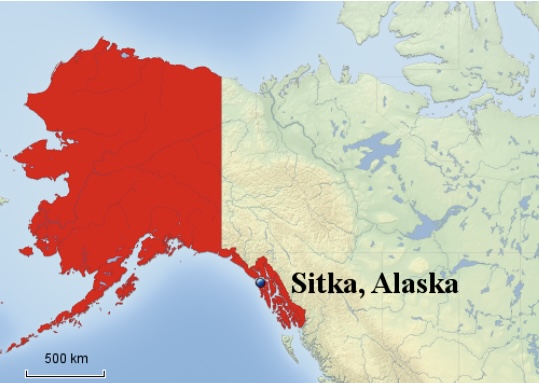
Bubble-net feeding is a learned behavior that humpbacks perform in teams. Not all can do it. A group of whales circle a school of fish and disorient them by blowing bubbles that effectively create a net around the prey. Then, upon a call by a lead whale, the entire group surfaces simultaneously, mouths open. With each such rise they ingest up to 15,000 gallons of water and scores of fish. The activity provides both food and hydration.

Humpbacks have a limited feeding season in cool, fish-rich waters such as Alaska or Antarctica. They can feed up to twenty-two hours a day, ingesting 2.0-2.5 tons of fish. When they subsequently move to warmer waters near the Equator they do not feed for months.

Early spring is herring season in Sitka. Bubble-net feeds are on display during the height of the season, around late March, early April. My trip was in the first week of April with a photography group of five. We had daily outings on a small fishing boat, out at sea eight hours each day.
Our tightly packed group included us five, a guide, the boat captain and a deck hand. The boat partnered with several others, collectively engaging in a search for whale pods. They maintained communication with each other about everything from weather and sea conditions to fishing boat activity and feeding calls of lead whales.
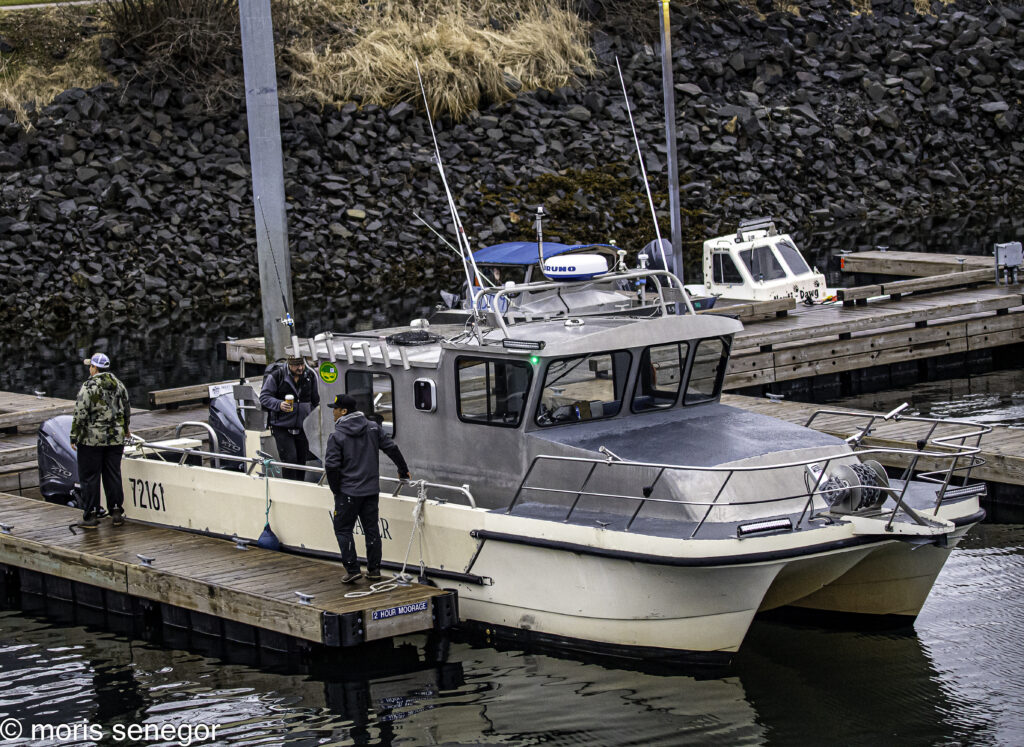
Anyone who has attempted whale photography knows the unique challenges of the endeavor. One has to balance themselves in a constantly rocking environment and make sure they or their camera do not fall. Meticulous composition is impossible in a rocking boat; horizons are almost always tilted. Most importantly, the whales pop up with no announcement and in unexpected spots, catching the photographer unawares.
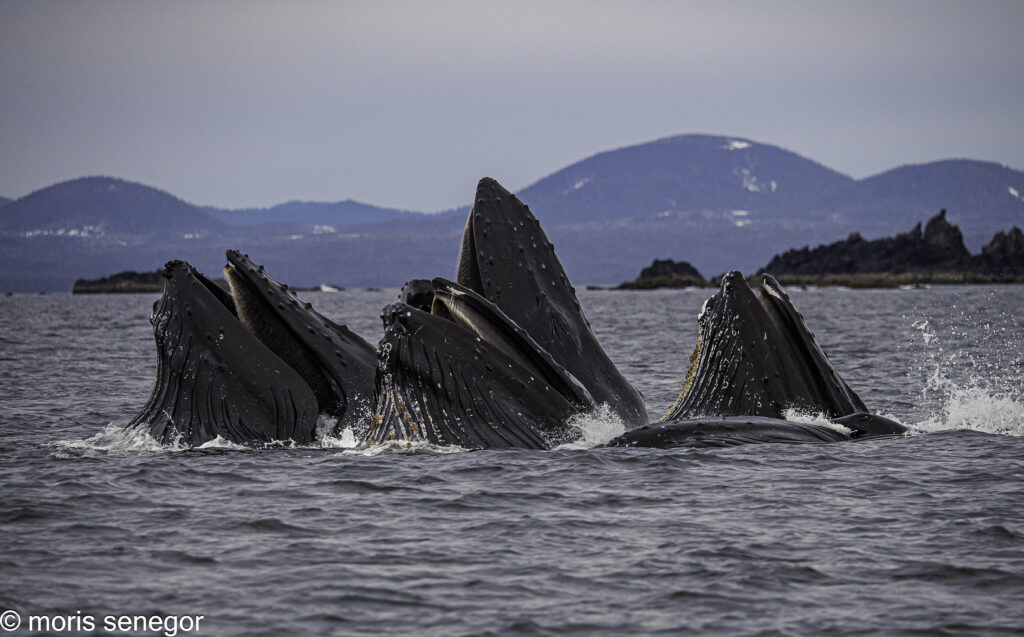
We surmounted these challenges because of the frequency of the bubble-feeds we witnessed, around three dozen each day, giving us plenty of opportunity to practice. Luck was an important factor. Sometimes we were fortunate and the whales popped up right in front of us. On other occasions we missed them when they appeared in unexpected or blind spots.
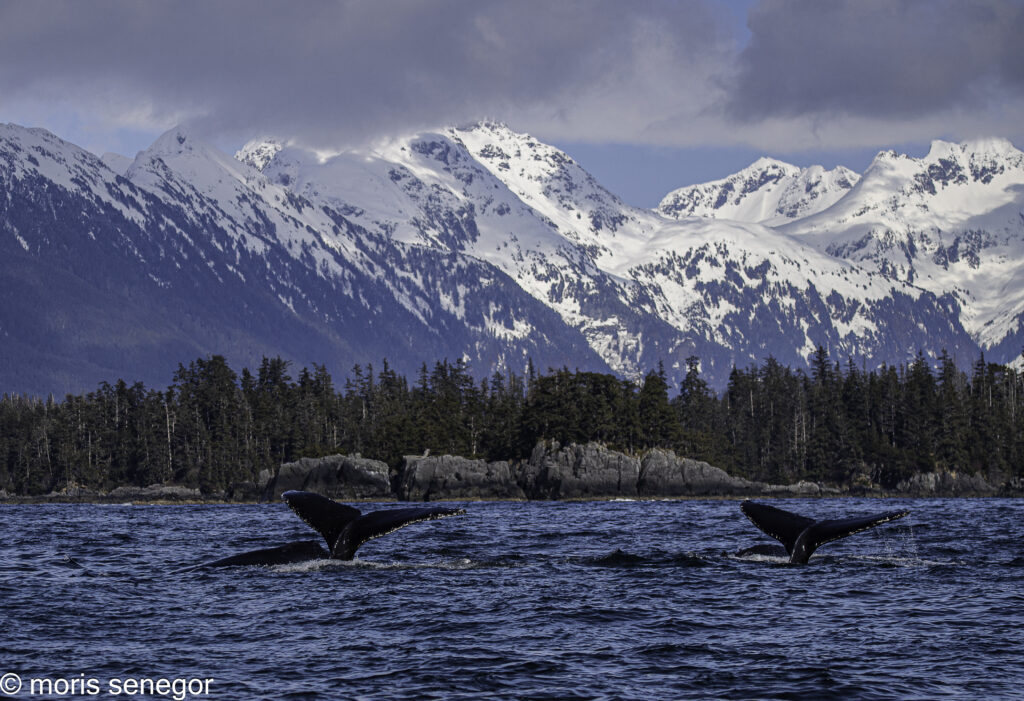
We quickly discovered that there was rhythm to it all. The pop-ups lasted only a few seconds. The pod then swam for five to ten minutes, displaying blows, dorsal fins and flukes (tails). I quickly grew tired of photographing these and only did so if they happened against interesting backgrounds.

The whales then dove down. When the last tail disappeared and the sea surface became calm, we knew that they were underwater creating another bubble-net. We all readied our cameras and waited.
The boat crew helped with their sonar. They detected the call of the lead whale and issued a loud warning on the radio, “Feeding call, feeding call!”
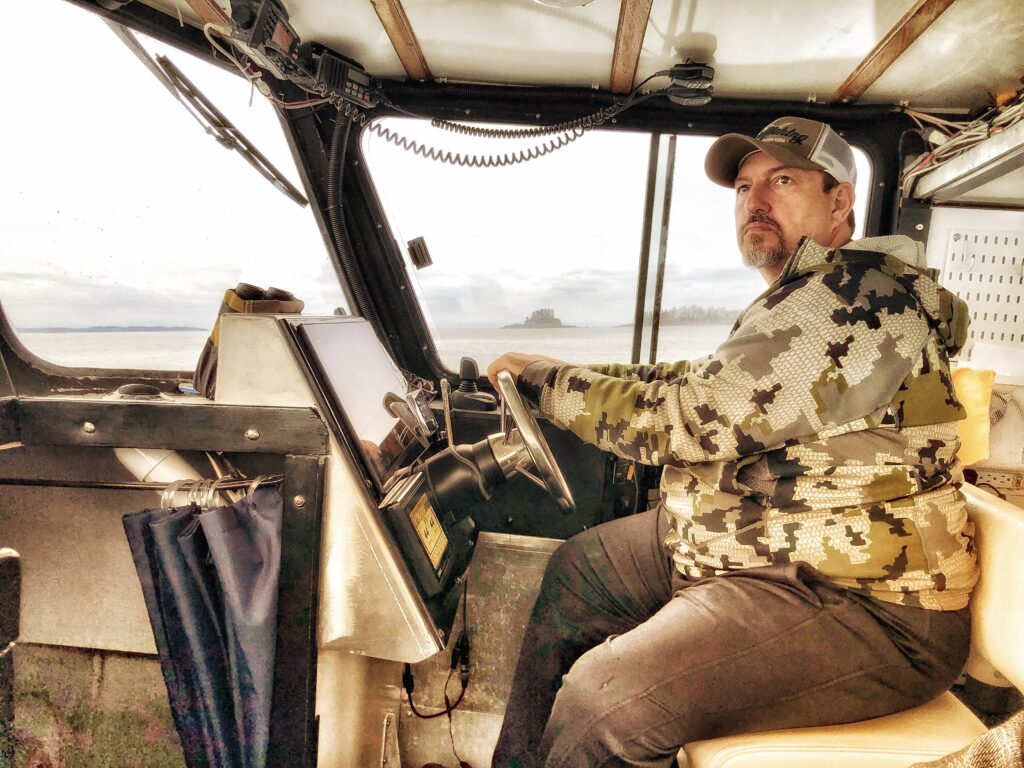
The pregnant time after the warning seemed to last forever. We had no idea where they would emerge. We guessed and we waited. Then a disturbance on the water surface, whoever saw them first shouting, “There!”. It was a moment of brief but intense excitement.
Quick timing with the shutter was a major challenge. The best action was in the first few seconds when they rose the highest, mouths open, dripping with sea water. If slow with the shutter, all we captured was them sinking back. Not very dramatic.
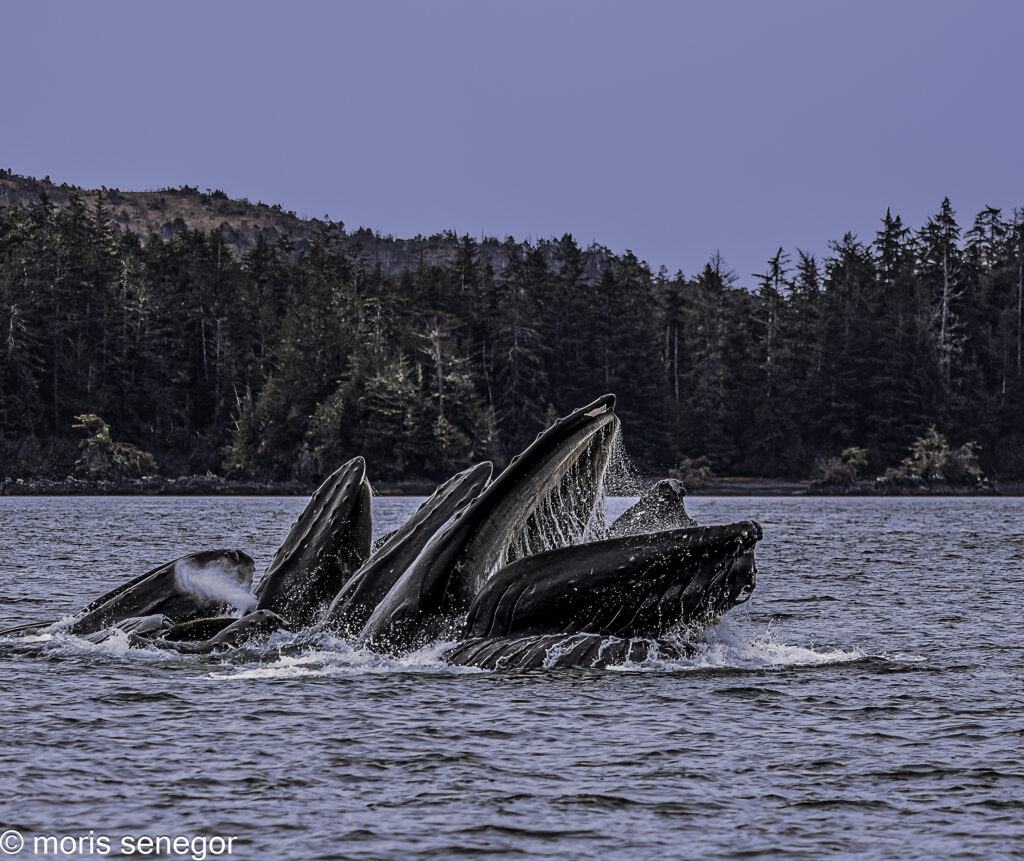
By the end of the trip, I had acquired enough practice that I didn’t miss any.
Some technical tips.
It goes without saying that there is no need for a tripod when the platform you’re standing on is constantly swaying. I strongly recommend that you sit while shooting. That way you don’t have to worry about balancing yourself during swells or choppy seas. I spent most of my time in a sitting area at the bow of our boat. It helped a lot.
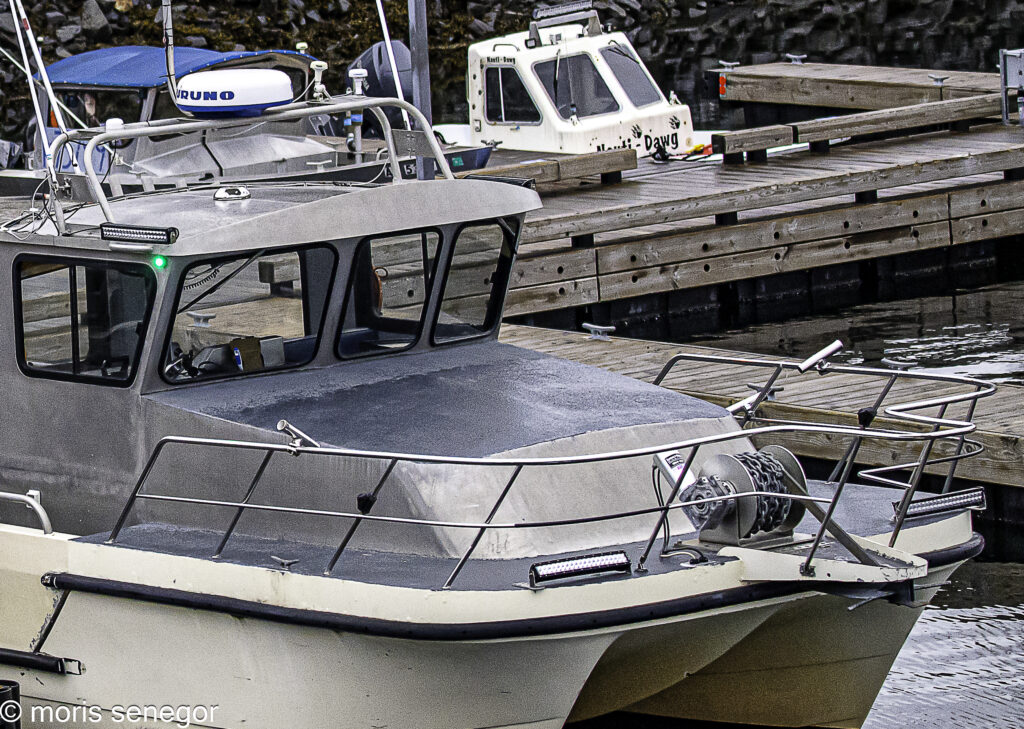
It is crucial to bring a camera with rapid fire shooting capability, 10 frames per second and up. That way you can capture multiple frames of the vital few seconds when the whales appear.

People brought along a variety of lenses. Long focal lengths, around 400 to 500 mm were important. However, there was also a need for wide angle range because sometime the whales emerged very close to the boat. Most in our group carried two cameras with different lenses. My Sigma 60-600 mm was perfect for the occasion. It was versatile enough to allow me the luxury of a single camera.
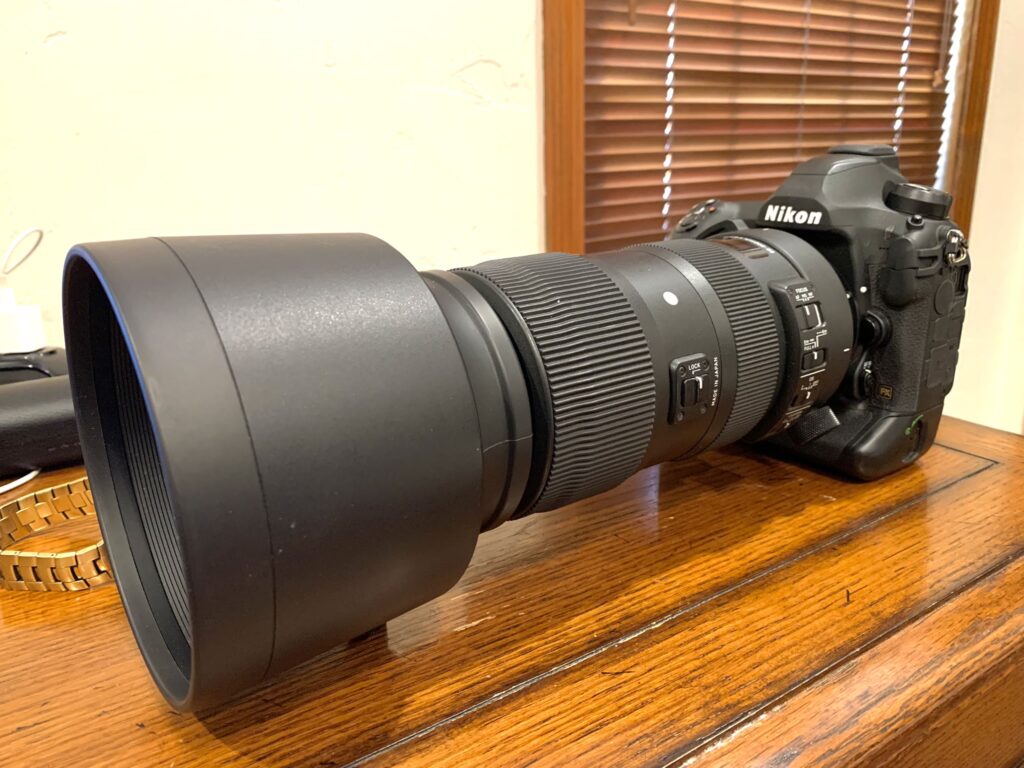
The group’s preferred mode was Manual with Auto-ISO. I used Shutter Priority with Auto-ISO and did just fine. Controlling depth of field was not crucial. My favored shutter speed was 1/1250. However, in choppy seas I had to increase my speed to 2000-3000.

The five days I spent in Sitka was not a touristy whale watching trip. It was a serious photography outing that would only appeal to sturdy, dedicated photographers. The boat was small and uncomfortable, with narrow side passages that lacked adequate railing. The risk of going overboard was real. The boat’s cabin was cramped and smelled of diesel fumes. I won’t detail the dismal conditions of the tiny toilet.
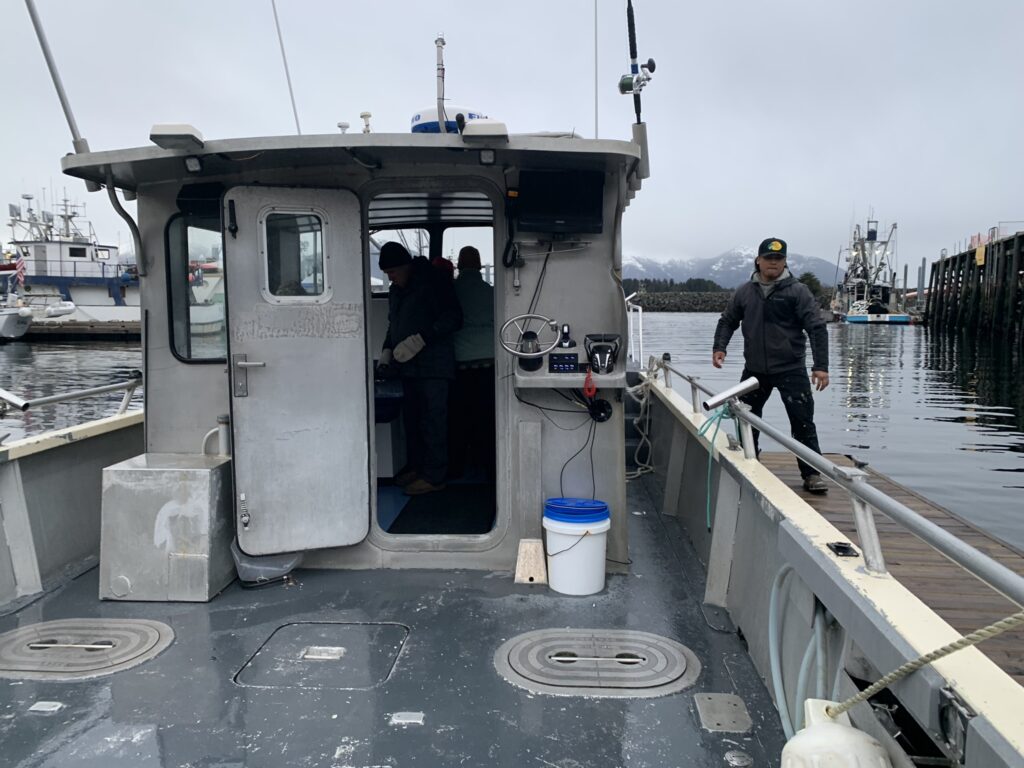
The weather was mostly overcast, rainy and cold. We were out on deck and felt the chill, especially when the boat was on the move.
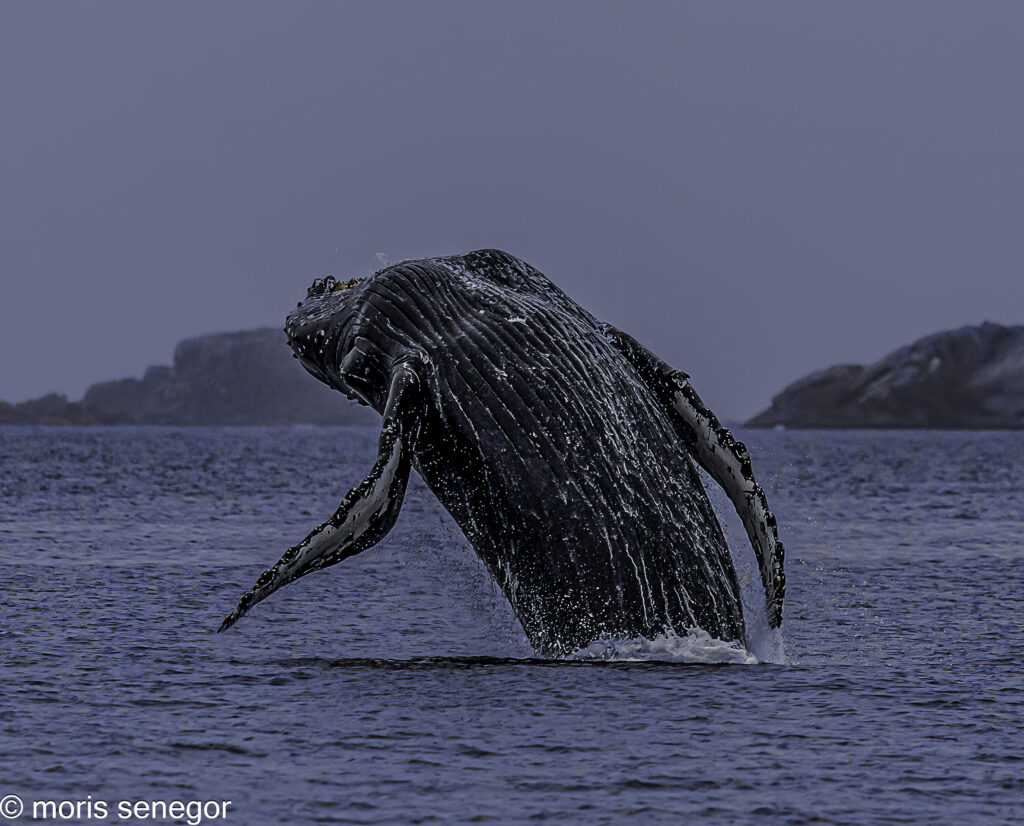
Regardless, the intimacy with the whales and the frequent opportunities for awesome shots more than made up for the lack of creature comforts.










